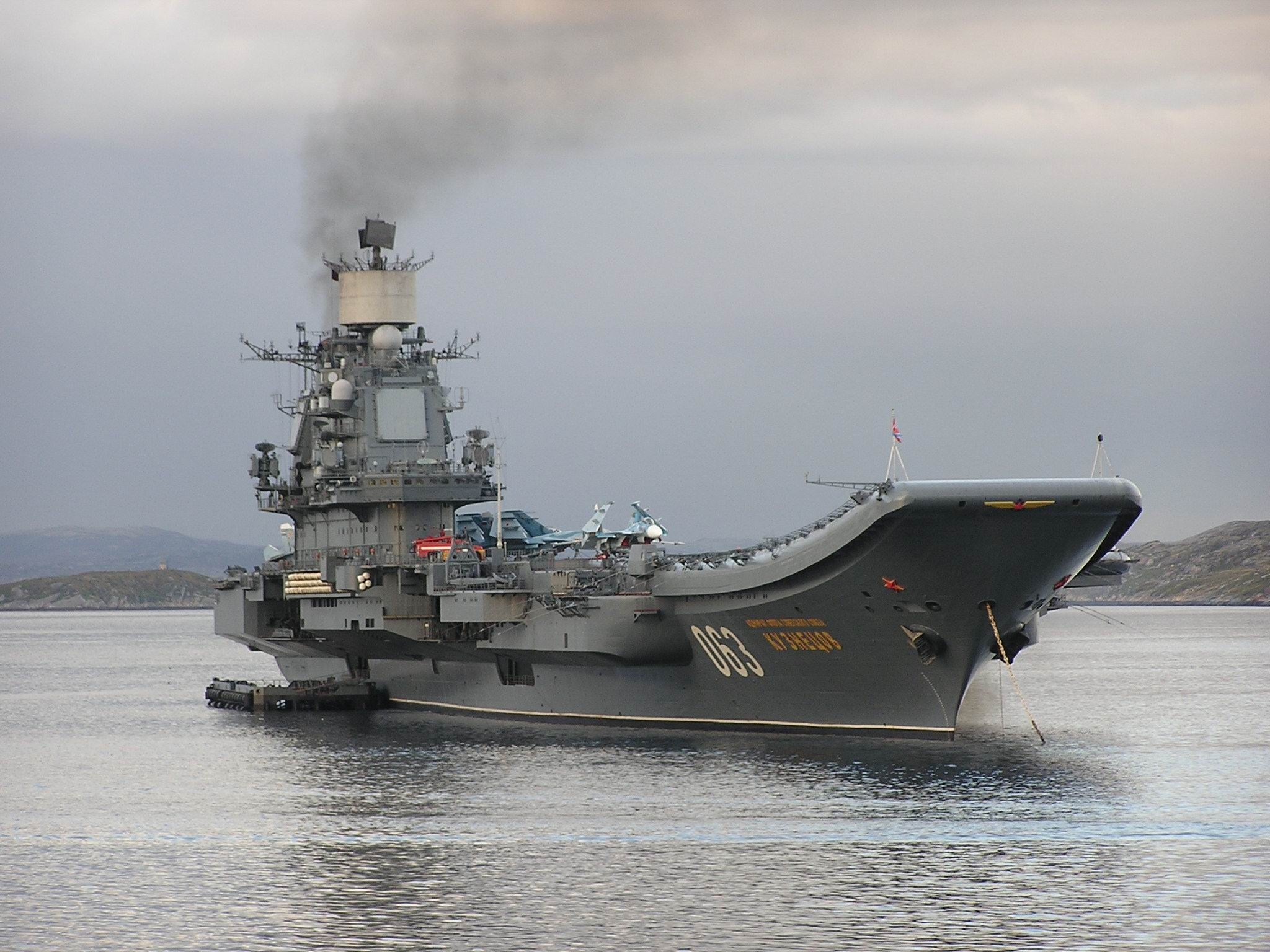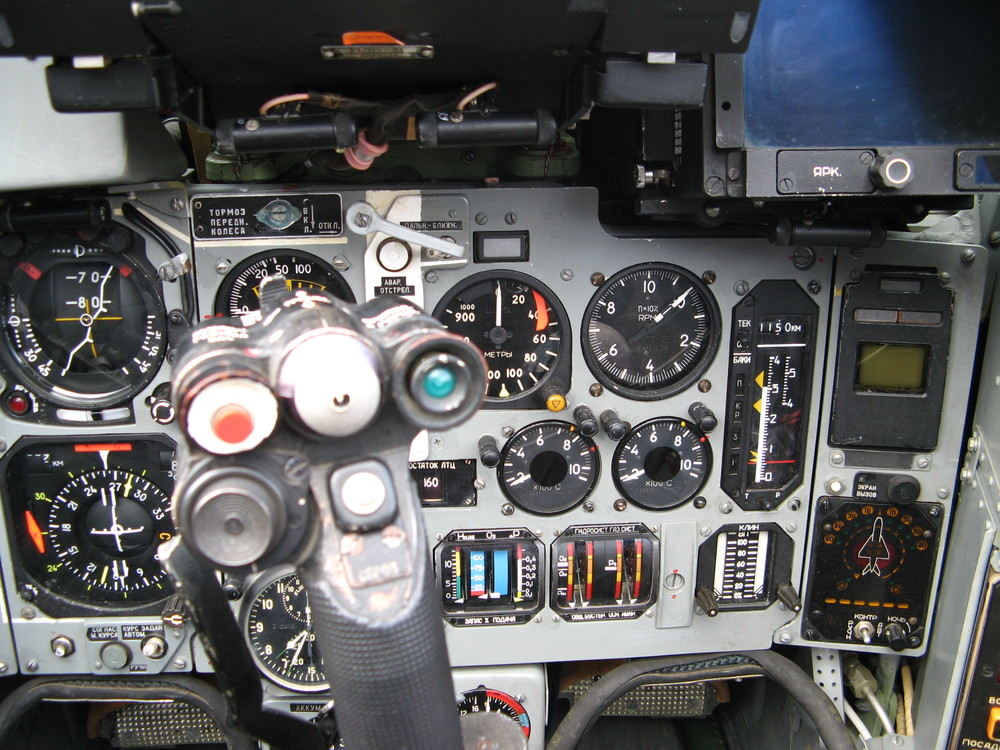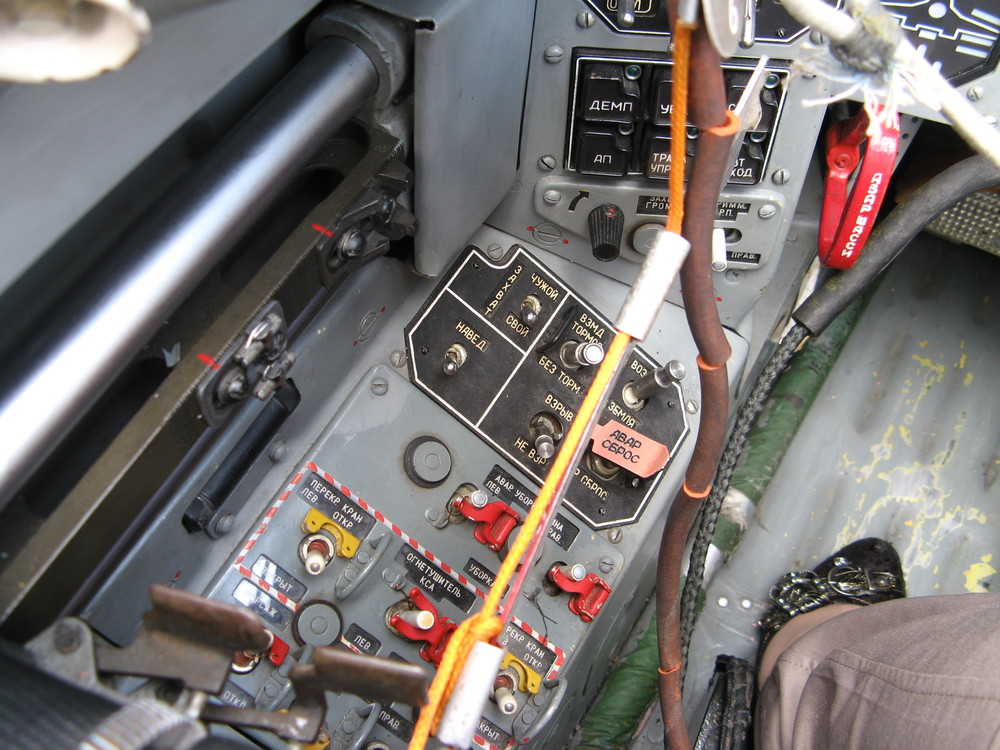-
Posts
4989 -
Joined
-
Last visited
-
Days Won
11
Content Type
Profiles
Forums
Events
Posts posted by Alfa
-
-
18 hours ago, F-2 said:
It has the Zhuk-ME, I’ve got the manual.
You got the manual?! - that sounds interesting.
-
 1
1
-
-
1 hour ago, F-2 said:
Thanks man! probably even easier then. Classic airframe and much more modernized avonics.
You are welcome
 .
.
Yeah my thoughts exactly . a nice looking SMT with the new cockpit and upgraded systems, but without that ugly hump of 9.19.
I guess its sort of the "budget" version of the SMT and I cannot remember whether it has the upgraded version of the N019 radar(N019MP) or the Zhuk-ME...probably the latter though it could be a customer option.
-
 1
1
-
-
1 hour ago, F-2 said:
SMT 9.18 uses the 9.13 airframe and no hump and similar performance. The radar manual for the export Yemeni version has been publicly available for around a decade like the manuals being used for this module. Maybe that, we would have a 9.12B to correspond with the FC3 9.12 and a 9.18 to correspond with the FC3 9.13S.
it uses the 9.12 airframe actually: Mikoyan-Gurevich MiG-29SMT (9-12) - Russia - Air Force | Aviation Photo #1297445 | Airliners.net
So no hump(not even the small one of the 9.13), but has the "swing-out" IFR probe typical of the SMT variants.
-
 1
1
-
 1
1
-
-
3 hours ago, Harlikwin said:
It absolutely could and did. There are interviews with USAF exchange pilots using the training plugs for the ER/ET in the 90's with the E. German 9.12s. Now the E. Germans didn't buy any ER/ET, kinda like the CZ 9.12s only carried R60M, but the 9.12 could use ER/ET.
There is one interview with one USAF exchange pilot("Spanky") and if you watched it, he said that it was a modification that allowed them to simulate long-burn versions of R-27 and that he had an oppotunity to fly with "the body" of a long burn R-27 at one point, but concluded that it "probably wasn't a go-to-war kind of thing"
You can mod all kinds of things - e.g.the Ukrainians recently managed to come up with a mod that allowed them to launch AGM-88 HARMs(albeit in a crude kind of way) from their MiG-29s - should we have that too then?
-
 1
1
-
-
4 hours ago, okopanja said:
R-27ER on 9.12 airframe, just to ensure we do not make incorrect assumptions on missions, weight carrying capacities etc.
No one said that you couldn't use an -ER on a 9.12 airframe - on the contrary I started by saying that this has been done with a "hack" . What I did say is that its an impractical weapon on the MiG-29(whether 9.12, 9.13 or 9.13S), because of its size and weight. If you read the German Luftwaffe manual on the MiG-29, you can find a section detailing the various flight limitations with different load-out options - with a standard load-out of 2x R-27R and 2x R-73, there are no limitations other than those for the aircraft itself(clean) - this would not be the case with -ERs.
Besides, as Yambo said, the aircraft in the photo is an upgraded variant for the Serbian airforce - considering the Kh-29s displayed beside it, it could well be that the "weight carrying capablities" were uprated as well.
4 hours ago, okopanja said:As I said before: the missiles get primed through side lobs of radar, so "compatibility" issue is strictly weather the avionics could display you proper R values.
That the quidance system works in the same way, does not necessarily mean that you can just hang an ER on a standard 9.12 and use it as an -R without making modifications for the purpose....you are the one making assumptions
1 hour ago, okopanja said:Picture also demonstrates that 9.12 vs 9.13 upgrade path limitation is meaningless (this is too often quoted in this forum so majority of people believe its hard limitation). R-27ER still utilizes the same pylon as R-27R, there is no distinction between guidance of these missiles and they work the same, and are hence compatible with radar we will get in DCS (if I have to guess this will be old export N019 with smaller number of channels).
It has nothing to do with "9.12 vs. 9.13 upgrade limitations" - there was a MiG-29S(9.12S), IIRC called MiG-29SD these days and even an .SMT variant(9.18) based on the 9.12 airframe. The point is that the version we get for DCS is the original "plain vanilla" 9.12 and as such should reflect the configuration and capabilities of this and not what it could potentially be modified to do or upgraded into.
-
 1
1
-
-
24 minutes ago, okopanja said:
I think the main reason here would probably be E variants not being exported outside of Soviet union.
The long-burn versions of the R-27 have been available for export for decades, so has the MiG-29B and MiG-29SE - yet only the latter is compatible with the R-27ER and IR versions(as well as RVV-AE).
24 minutes ago, okopanja said:The R-27 was from the very beginning envisioned as modular missile family, where the guidance sections, warhead, motors and seekers (SARH, IR and passive radar) were be combined (probably to reduce costs). The only difference between R-27ER and R-27R is the larger motor. Everything else is exactly the same, including the same power supply limit of 60 seconds (IMHO: ER/ET would benefit from extra 20 seconds). The missiles even get primed the same way through radar side lobs. The only difference that would cause some issues is the RMax indication,
It was invisioned as a modular missile system common to the MiG-29 and Su-27, where the IR/extended range versions were intended as an additional option specifically for the Su-27 due to its wider mission prospect.
24 minutes ago, okopanja said:...but even if they do not update the radar to take into account this, the pilot could always launch it with launch override.
In DCS you mean?

-
3 hours ago, CrazyGman said:
IIRC R27RE and RT do not require the upgraded radar, there is no major difference in the seeker, it's just an increased rocket booster, and the original radars were built with the ability to recognize this option when the missile was put on the pylon and adjust the launch parameters shown on the HUD
The SUV-29 of the original 9.12(which it seems is the one we get for DCS) did not have support for the IR- and long-burn versions of the R-27 - only the R-27R.
IIRC use of the R-27ER has been achieved by a "hack" that pretty much tricks the WCS to think its a R-27R, which worked because, as you said, the guidance section and thus compability with the radar is the same. But whether this also involved the proper engagement parameters for the -ER is doubtful.
At any rate its one of those things that might look good on paper, but in reality is a rather impractical prospect. Its just too big and heavy for the MiG-29 with subsequent flight restrictions, while providing only a moderate range improvement.
-
 3
3
-
-
Finally!

-
 1
1
-
-
I don't think that is modeled. Also real MiG29 has a 4G limit when center tank is mounted. Don't think that limit is simulated.
The MiG-29 as such does not have a 4G limit for the centerline tank. All stores come with some restrictions that should be observed by the pilot for safe operation, but they are not systemic - i.e. the flight control system does not impose them.
So its not a limit they can simulate other than the aerodynamic/weight effect of ordinance.
-
Schmidtfire I wanted to ask, you heard the expanded alpha and g limits are not modeled in our S model? I have no idea, had not personally heard anything either way on that specific subject. I know that’s OT a little but it is important that not all differences are modeled.
I seem to remember Chizh mentioning something about this on the Russian section once, but I cannot remember if they were going to implement it or just thought about doing it.
-
The Urals in the screenshots are not Ural-375 though(they have a different front-grill).
They are the later Ural-4320 version - the cargo variants(with and without tent) are even of the late Ural 4320-10(from around 1993), which you can identify by the external airfilter-house on the mudguard.
-
The reason is that the real aircraft's radar processor could not deal with it. This is fine for the original flanker/mig radar, but incorrect for the APG-63, MiG-29S (At least the supposed radar upgrade we're supposed to have in FC3) and probably the very first upgrade to the Flanker radar dealt with this (faster processor).
I can't speak to the MiG-29S radar, since we know so little of it, but I know that the RL APG-63 will track jamming strobes fine in TWS ... it doesn't need to switch to STT.
What you're seeing in-game is the result of the shared radar model in the FC3 aircraft, IMHO.
There is a three-way switch(АП - ОТКЛ - АПК) on the MiG-29 radar panel, that sets how the SNP(TWS) mode operates in the presence of jamming. I cannot remember the details, but "ОТКЛ"(OFF) is the default position for normal operation, while the others are for trying to lock on to a jamming contact by other means - i.e. in the real aircraft there other options than just jumping out of TWS and enter STT.
I think Vatikus knows more about this than I do, but just doesn't bother explaining it, since ED has said that there are no plans to change anything in relation to the system's complex.
Besides, as you said, there is the question of the simple ECM modelling in general.
-
From "Руководство по летной эксплуатации (РЛЭ) распространяется на самолеты МИГ-29 всех серий и включает основные указания летчику по эксплуатации и технике пилотирования самолета, подлежащие обязательному выполнению, а также рекомендации по действиям в особых случаях в полете." :)
Thanks :) .
Anyway, it basically says the same as the Luftwaffe manual, except for specifying the conditions for the max g-loads.
-
Limits for full or partial CFT + Wing tanks:
900kph M0,9 G +4 -1,5; max 15 deg. AoA
Limits for full or partial CFT:
1000kph M0,9 G +4 -1,5; max 22 deg. AoA (M<0,85), max 15 deg. AoA (M>85)
Limits for empty CFT:
1000kph M0,9 G +7 -1,5
1000kph M0,85 G +9 -2,5
Limits with no payload:
1500kph M2,35 G +7 -1,5
M0,85 G +9 -2,5
Where did you find those figures draconus? :)
According to the Luftwaffe manual, the maximum allowed speed with CFT is M1.5 regardless of whether its full/partial full or empty(because its a drag related issue), while G-limitation is is + 4/-1.5 when full/partial full, but none(general aircraft flight limits) when empty.
For wing tanks its M0.9 - again regardless of whether they are full or empty, while the G-limitation is +6/-1.0 when empty and +4/-1.0 when full/partially full.
-
I don't know where the electronic steering comes from - the initial design specs called for a flat plate slotted array MSA. So let's start with failing to get to that level when 'everyone else' was there already.
The N010(and I guess N011 as well) combined hydro-mechanical steering in azimuth with electronic scanning in elevation, so Dudikoff is right :) .
I am not sure what the initial design specs called for - whether it was for this or an actual PESA like on the MiG-31, but if you consider the volume and weight of the latter, its easy to see why that design wasn't achievable at the time for the Su-27....not to mention the MiG-29.
-
I always heard the S is an upgrade that can be applied to 9.12 or 9.13, the example we have is 9.13S. So a 9.13doesmt necessarily have to be an S. My source is Paul Edens book from 2004.
Thats correct :)
-
МиГ-29 (9.12) = MiG-29 = "FULCRUM A"
МиГ-29УБ (9.51) = MiG-29UB = "FULCRUM B"
МиГ-29 (9.13) = MiG-29 = "FULCRUM C"
МиГ-29С (9.13С) = MiG-29S = "FULCRUM C"
There is no such thing as a "MiG-29C" or "MiG-29A" - these are erroneous designations....either simply a case of applying "Western" designation system(like F-16A and F-16C) to Russian aircraft, or mixing NATO reporting names with the original designation - i.e. MiG-29 + FUlCRUM A = MiG-29A.
Note that:
a) NATO makes no distinction between the MiG-29(9.13) and the MiG-29S(9.13S), but calls both "FULCRUM C".
b) Russian/Soviet designation makes no distinction between different versions of the "baseline" MiG-29 - i.e. domestic 9.12, warsaw pact 9.12A, commercial 9.12B and even the 9.13 is still just called "MiG-29".
-
That is correct... was about to write this but my mind had its own way :D
NP I know the feeling :D
-
Is it completely modelled in DCS ?
Because I always thought that if an AIM-7 (or a R-27R) was fired at me, breaking the lock will be enough to avoid the threat, even if the missile is close to me...
Yes..
EDIT : Ok I understand now. The missile does not track the plane, first it uses datalink from the launching plane then use the reception of the radar illumination of the target from the launching plane. So you have to lock the target until splash or miss.Correct :)
I thought your were saying that this missile becomes autonomous in the end of its flightNo a SARH seeker needs the launching radar to illuminate the target - an ARH doesn't :)
-
9.12 has IFF button on stick, while unlock was on the left side panel (as per attached image)
9.13 has these reversed. You have unlock on stick, while it has IFF switch on that left side panel with option to enable locking either friendly or not.
Interesting info about the functions Vatikus, but as far as this being a 9.12 vs. 9.13 difference, I don't think thats correct :) .
I looked around and found that in the Hungarian MiG-29B it does indeed appear as you described - "запрос" by the button on the stick and a button marked "сброс" on the panel you mentioned - the photos you posted also appear to be of that version(judging by position of the AOA/G meter and master warning lamp).
But on photos of a Russian 9.12(attached), it says "сброс" at the button on the stick, while there is no button on that panel - at the position, there is instead a 3-way switch entitled; "заxваt", with the options: "свой" and "чужой". So this appears to be what you talked about in regards to IFF.
So it looks more like a difference between the 9.12 and 9.12B.
-
Yeah, I've seen it as you describe, too. Interesting what you said about the German. Perhaps an indicator of model variances or refit.
Yes it could be that the button was intended to have an IFF function at an early stage, but omitted later. The photo I posted is of a 9.13(one of the ex-Moldova ones displayed at Nellis).
Then again I guess the button could have a dual functionality - e.g. press once for IFF interrogation/hold down for 3 seconds to break lock or something like that. AFAIK the Germans don't use the original IFF system(believe it was removed prior to them taking possesion of the aircraft), so that could explain why the button isn't in use for that function.
But I don't know :)
-
It's not marked, that's the problem :)
Ah ok :) . No I haven't seen it described either......thats why I asked :D
Makes you wonder if it actually has a function in the MiG-29.
-
I cannot find information about slider that's marked as "target distance". No official documents has it marked that way.
Well its not a slider, but a wheel - but how is it marked then?
-
What's the source for this info?
I don't know, but its accurate.
What are you wondering about?




Flaps, brakes and afterburner...
in Su-33 for DCS World
Posted
Yeah in the Su-33, there are only two flap positions - extended or retracted.
Yes there are two different modes for the wheel brake - normal brake and "run-up" brake, which is used to hold the aircraft at stand still prior to take-off, but this is not used onboard the aircraft carrier though - at the launch positions, there are two remotely operated stop blocks in the carrier deck that are raised to hold the aircraft and retracted for take-off. But I cannot remember whether this carrier feature is simulated in FC3.
It called "emergency thrust mode" and allows for a brief increase of AFB thrust by some 300 kgf per engine
Yep - by some 10% apparently and IIRC the above mentoned "emergency thrust mode" is only available with the FOD grilles in the forced retracted position.